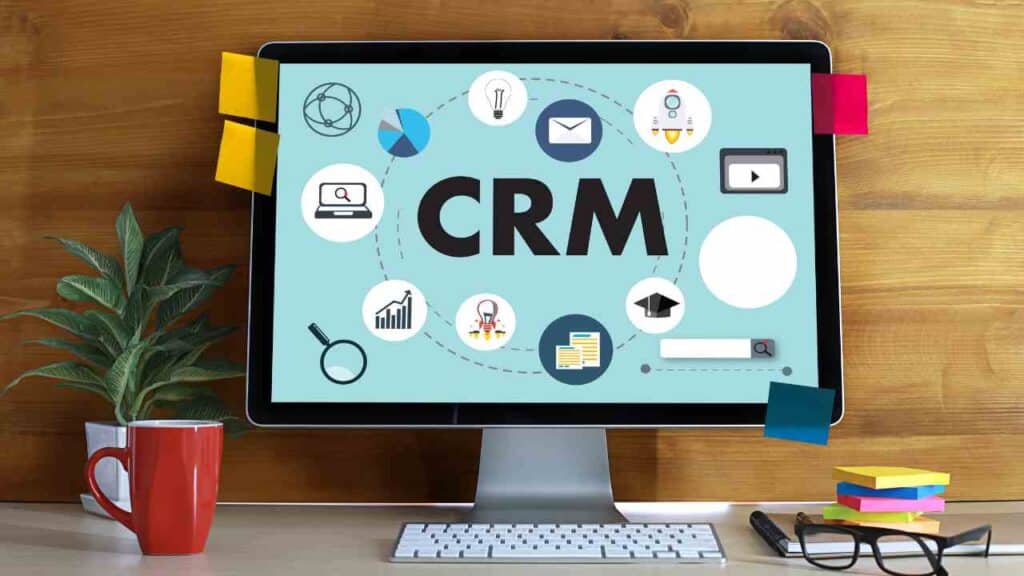Realigning Resources for Business Enablement Through CRM

Customer Relationship Management (CRM) has become an essential tool for businesses of all sizes and industries. It allows organizations to manage their interactions with customers, streamline processes, and improve overall efficiency. However, many businesses fail to fully leverage the potential of CRM due to a lack of understanding or misalignment of resources. In this article, we will explore the importance of realigning resources for business enablement through CRM and provide valuable insights on how to maximize its benefits.
The Role of CRM in Business Enablement
CRM systems are designed to help businesses build and maintain strong relationships with their customers. By centralizing customer data, CRM enables organizations to gain a comprehensive view of their customers, track interactions, and personalize communication. This, in turn, leads to improved customer satisfaction, increased sales, and enhanced customer loyalty.
However, the true power of CRM lies in its ability to enable businesses to make data-driven decisions. By analyzing customer data, businesses can identify trends, preferences, and pain points, allowing them to tailor their products, services, and marketing strategies accordingly. CRM also facilitates collaboration among different departments, ensuring that everyone is on the same page and working towards a common goal.
The Importance of Resource Realignment
While CRM offers numerous benefits, its successful implementation requires proper resource allocation and alignment. Many businesses make the mistake of treating CRM as a standalone tool, failing to integrate it into their overall business strategy. This often leads to underutilization of CRM and missed opportunities for growth.
Resource realignment involves aligning people, processes, and technology to maximize the value derived from CRM. It requires a holistic approach that involves all stakeholders, from top management to front-line employees. By realigning resources, businesses can ensure that CRM becomes an integral part of their operations, driving growth and enabling long-term success.
1. People
One of the key resources that need to be realigned for CRM enablement is people. Employees at all levels should be trained on how to effectively use CRM and understand its benefits. This includes providing comprehensive training on CRM functionalities, data entry best practices, and data analysis techniques.
Furthermore, businesses should foster a culture of data-driven decision-making, where employees are encouraged to use CRM data to inform their strategies and actions. This requires effective communication and collaboration between different departments, breaking down silos and promoting cross-functional teamwork.
2. Processes
Another critical aspect of resource realignment is aligning processes with CRM. Businesses should review their existing processes and identify areas where CRM can add value. This may involve streamlining workflows, automating repetitive tasks, and integrating CRM with other systems such as marketing automation or inventory management.
For example, a sales team can benefit from CRM by automating lead nurturing processes, tracking sales activities, and generating accurate sales forecasts. By aligning processes with CRM, businesses can eliminate inefficiencies, reduce manual errors, and improve overall productivity.
3. Technology
Choosing the right CRM technology is crucial for successful resource realignment. Businesses should carefully evaluate their needs and select a CRM system that aligns with their goals and objectives. The chosen CRM should be user-friendly, scalable, and offer robust reporting and analytics capabilities.
Integration with other business systems is also essential to ensure a seamless flow of data across different departments. For example, integrating CRM with an email marketing platform can enable personalized email campaigns based on customer preferences and behaviors.
Case Studies: Realignment Success Stories
Let’s take a look at two real-life examples of businesses that successfully realigned their resources for CRM enablement:
1. Company XYZ
Company XYZ, a mid-sized e-commerce retailer, realized that their customer data was scattered across different systems, making it difficult to gain a holistic view of their customers. They decided to implement a CRM system and realign their resources to maximize its benefits.
First, they provided comprehensive training to their employees on how to effectively use the CRM system. This included training on data entry best practices, customer segmentation, and personalized marketing campaigns. They also established cross-functional teams to ensure collaboration and alignment across different departments.
By aligning their processes with CRM, Company XYZ was able to automate their email marketing campaigns, resulting in a 20% increase in email open rates and a 15% increase in click-through rates. They also used CRM data to identify customer preferences and tailor their product offerings, leading to a 10% increase in customer satisfaction.
2. Company ABC
Company ABC, a software development company, struggled with inefficient lead management processes and missed sales opportunities. They decided to implement a CRM system and realign their resources to address these challenges.
They provided extensive training to their sales team on how to effectively use the CRM system for lead management and tracking. They also integrated CRM with their marketing automation platform to automate lead nurturing processes and track the effectiveness of their marketing campaigns.
By aligning their resources with CRM, Company ABC was able to increase their lead-to-opportunity conversion rate by 25% and reduce their sales cycle by 20%. They also gained valuable insights from CRM data, allowing them to identify bottlenecks in their sales process and make data-driven decisions to improve overall performance.
Key Takeaways
- CRM plays a crucial role in business enablement by helping organizations build strong customer relationships and make data-driven decisions.
- Resource realignment is essential for maximizing the benefits of CRM and ensuring its integration into the overall business strategy.
- People, processes, and technology should be realigned to effectively leverage CRM.
- Comprehensive training, cross-functional collaboration, and a culture of data-driven decision-making are key to successful resource realignment.
- Choosing the right CRM technology and integrating it with other business systems is crucial for seamless data flow and improved efficiency.
In conclusion, realigning resources for business enablement through CRM is a critical step for organizations looking to leverage the full potential of CRM. By aligning people, processes, and technology, businesses can maximize the benefits of CRM, improve customer satisfaction, and drive long-term growth. Visit https://SaasExpert.ca – Your All-In-One Sales and Marketing Platform for small businesses, agency owners, and marketers to learn more about how CRM can transform your business.
Learn more about “Implementing CRM to Match Resources with Business Priorities” right here.
Frequently asked questions about Realigning Resources for Business Enablement Through CRM.

What does ‘realigning resources’ mean in the context of CRM, and how can it boost business enablement? 🔄
Realigning resources means strategically adjusting your business’s manpower, budgets, and tools to better meet your objectives — think of it as repositioning your chess pieces to secure a checkmate. With CRM, this process becomes data-driven and focused. CRM tools provide insights into customer behaviors, sales trends, and team performance. By analyzing this data, businesses can shift resources to where they’re needed most, enhancing productivity and ensuring that every action is aimed at business growth. Whether it’s ramping up customer support in anticipation of a new product launch or shifting marketing spend to high-performing channels, CRM makes realignment both strategic and seamless, thereby enabling your business to adapt and thrive. 📊
How can CRM help identify which business areas need resource realignment? 🧐
A CRM system is like a diagnostic tool that scans your business processes and highlights areas in need of attention. It monitors various metrics across sales, customer service, and marketing to pinpoint inefficiencies or opportunities. For instance, if the CRM analytics reveal a high lead drop-off rate at a specific stage in the sales funnel, this signals a need to realign resources to improve lead nurturing and engagement at that critical point. Or, if customer service tickets are spiking due to a particular issue, reallocating resources to address this can enhance customer satisfaction and retention. CRM takes the guesswork out of resource planning, allowing you to make targeted adjustments that directly support your business’s operational health. 👩💼📈
Can CRM facilitate better teamwork when reallocating resources for business enablement? 🤝
Absolutely! Think of CRM as the conductor of an orchestra, ensuring each section comes in at the right time for a harmonious performance. It provides a centralized platform where all team members can view and understand the business’s priorities and the roles they play in achieving them. When reallocating resources, CRM systems can assign tasks, set goals, and track progress, keeping everyone in sync. It ensures that communication is transparent and that all departments understand the rationale behind resource shifts. This collaborative environment fostered by CRM is crucial for effective realignment, ensuring that teams are not only informed but are also working cohesively towards common business enablement goals. 🎼
What are the risks of not using CRM for resource realignment, and how does CRM mitigate those risks? ⚠️
Not using CRM for resource realignment is like sailing a ship without a compass; you risk veering off course. Without CRM, businesses may rely on outdated information, personal hunches, or incomplete data to make decisions, which can lead to misallocated resources, missed opportunities, and a reactive rather than proactive strategy. CRM mitigates these risks by providing real-time data, trend analysis, and customer insights. It helps businesses anticipate market changes, customer needs, and internal challenges, allowing for a proactive realignment of resources. This forward-thinking approach reduces the risk of resource wastage and ensures that the business is always aligned with the market dynamics and customer expectations. 🧭
In what way does CRM empower decision-makers in resource realignment for business enablement? 💼
CRM empowers decision-makers by giving them a bird’s-eye view of the business landscape coupled with granular details on operational aspects. It’s like having a high-powered telescope that also allows you to zoom in on the microscopic details. Decision-makers can see overarching patterns and trends that inform strategic decisions while also accessing detailed reports on individual customer interactions, sales pipeline health, and campaign performance. This dual perspective ensures that when resources are realigned, each decision is underpinned by comprehensive insights, making every move towards business enablement a well-informed one. CRM turns decision-makers into strategic visionaries, equipped to navigate the business towards success with confidence and precision. 🌟
- crm
- customer relationship management
- Realigning Resources for Business Enablement Through CRM
- What is CRM Software?






